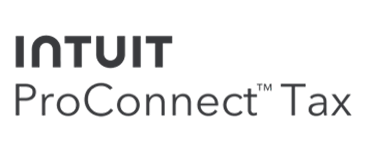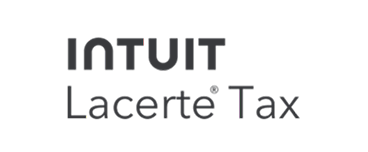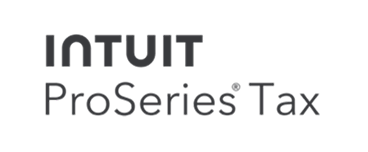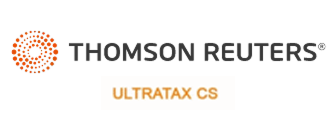
How to Set Prices for Client Accounting Services in 2025
If you’re a small firm owner offering Client Accounting Services (CAS), you’re sitting on a goldmine. But let’s be honest, quoting CAS fees can feel like fumbling in the dark.
You’re probably asking:
- “Will clients actually pay for this?”
- “How do I stop undercharging without losing them?”
- “Am I giving too much away for free?”
Here’s the truth: your pricing isn’t just a number. It’s a signal of your value, your confidence, and your future.
Let’s walk through a framework that will show you exactly how to set prices for CAS in a way that’s simple, profitable, and aligned with the transformation your clients actually want.
The Problem: Confusing Pricing = Confused Clients (and Shrinking Margins)
You didn’t start your firm to become a pricing expert. But without a system, most firms end up:
- Discounting to get a “yes”
- Caving to scope creep
- Avoiding strategic work because it’s hard to price
The result? You’re overworked, underpaid, and unsure how to fix it. But there’s a better way.
The Plan: SmartPath’s 5-Step CAS Pricing Framework
Step 1: Start with the Client’s Desired Progress
Ask better questions up front. Not “Do you want monthly books?” but: “What would progress look like in your business 12 months from now?”
Clients will tell you exactly what they want to pay for:
- “I want to stop being surprised by taxes.”
- “I want clarity on cash flow.”
- “I want to know which services are making me money.”
Use this as your pricing anchor.
Step 2: Bundle Your Services Into Outcome-Based Packages
Instead of selling hours or tasks, group your services under five categories of value:
- Setup Help (onboarding, tech stack, entity config)
- Clean-Up (historical books, reconciliations)
- Ongoing Management (monthly closes, payroll, reports)
- Tax Reduction (planning, entity strategy, optimization)
- Growth Planning (dashboards, forecasts, KPI tracking)
Then, offer these in three clear tiers: Basic, Growth, and Premium, each tied to a different level of outcome.
Step 3: Use a Pricing Calculator, Not a Guess
Avoid awkward guesswork and scope surprises.
Price based on:
- Level of complexity
- Monthly time commitment
- Strategic value
- Access and urgency
SmartPath’s CAS Pricing Engine automates this, but whatever you use, make sure it’s tied to inputs you can defend confidently.
Step 4: Present Three Options, Not Just One
Give your client a choice. When clients see clear, ascending value, they’ll choose to pay more.
Structure your tiers like this:
- Tier 1: Compliance only
- Tier 2: Compliance + Planning
- Tier 3: Compliance + Planning + Implementation
This isn’t about upselling, it’s about aligning your price to the progress they want most.
Step 5: Set Monthly Recurring Fees with Built-In Support
You’re not just delivering outputs, you’re delivering peace of mind, clarity, and momentum.
That’s why one-time fees and hourly rates fall flat.
Your monthly fee should include:
- Ongoing access to your team
- Timely reviews or planning sessions
- Scope definitions to protect your margins
This is how you shift from reactive accountant to strategic partner.
What Firms Gain With the Right CAS Pricing
Firms that price CAS correctly:
- Create recurring revenue
- Command premium fees
- Attract better-fit clients
- Stop giving away advice for free
- Build capacity with confidence
And most importantly, they enjoy running their firm again.
What to Charge for CAS in 2025
Here’s a high-level look at market-aligned pricing:
- Solo clients: $250–$1,000+/month
- Micro-businesses: $500–$1,500+/month
- Growth-stage businesses: $1,500–$3,500+/month
Average CAS + Advisory packages: $750–$2,500/month is common.
Your price should rise with scope, complexity, and the progress you drive, not the number of transactions you process or the number of meetings or phone calls the client receives.
Common Questions
How often should I raise fees?
Review fees once per year. Use annual reviews to align scope and increase pricing confidently.
What if my clients can’t afford it?
That’s why you offer tiers. Let them choose their level of transformation. Suppose a client’s business is too small or new, and they can afford CAS-level services. In that case, you can create entry-level “compliance” focused services that allow you to start the relationship, monitor their growth, and then “upgrade” them to a CAS package when it makes sense. However, your clients need to qualify to receive a CAS-level package.
How do I justify my fees?
Don’t talk about hours. Talk about outcomes. Focus on the progress a client wants to make. If you align your packages with specific progress that a client cares enough about, they will happily pay the fee. But if you’re offering services they don’t care about, your feed can never be cheap enough; they will only be focused on the cost, not the value.
Example:
You have a business client who wants to sell their business in the next year. They need updated financials, tax planning for the business sale, and support with their valuation. If their potential business sale nets them $5M in cash, would they still receive a return on their investment if they spend $50k in billing with you to ensure the sale happens smoothly and accurately? Of course, they’re paying $50k to make $5M.
The progress you’re helping them make justifies your fees and positions you as their partner in a bigger result.
Not every client will make $5M from working with you, but almost every client has something in their business they would be willing to pay for if you could help them achieve it.
Use data, dashboards, and progress tracking to show what’s changing.
Let’s Build Your Pricing Model, Together
You deserve a pricing system that works as hard as you do. If you’re ready to stop winging it and start winning with CAS, let SmartPath guide you.
Let’s make pricing the strongest part of your practice, not the scariest.






